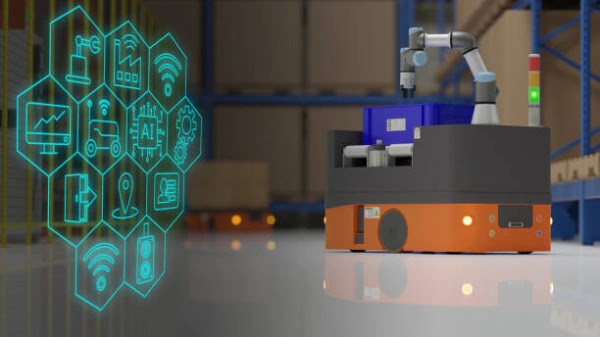Featured
- Get link
- X
- Other Apps
Why Weather Data is a Crucial Component for App Developers in 2023

Weather data has become a crucial component for app developers in 2023 due to its significant impact on various industries and the daily lives of people around the world. Weather conditions play a vital role in numerous sectors, including agriculture, transportation, tourism, energy, and even personal activities. As a result, app developers recognize the immense value of integrating weather data into their applications to enhance user experiences and provide valuable insights. This article explores the reasons why weather data has gained.
One of the primary reasons why weather data is crucial for
app developers is its impact on agriculture. Weather conditions directly affect
crop growth, yield, and overall agricultural productivity. By incorporating
real-time weather data into their apps, developers can provide farmers with
accurate and up-to-date information about precipitation, temperature, humidity,
and other relevant factors. This empowers farmers to make informed decisions
regarding irrigation, pest control, harvesting, and other crucial aspects of
their operations. Additionally, by leveraging historical weather data,
developers can create predictive models that assist farmers in planning and
optimizing their cultivation strategies.
Weather data also plays a vital role in the transportation
sector. App developers can leverage weather information to enhance navigation
systems, enabling users to make informed decisions about their routes. For
example, an app that provides real-time weather updates can help drivers avoid
severe weather conditions such as storms, heavy snowfall, or flooding, ensuring
safer journeys. Moreover, by incorporating weather data into logistics and
supply chain management apps, developers can optimize transportation routes and
schedules, reducing fuel consumption, delivery delays, and associated costs.
In the tourism industry, weather conditions significantly influence travel plans and activities. App developers recognize the importance of providing travelers with accurate and timely weather information. By integrating weather data into travel apps, developers can offer users insights into current and forecasted weather conditions for their desired destinations. This allows travelers to plan their trips effectively, pack appropriate clothing, and make informed decisions about outdoor activities such as hiking, skiing, or beach visits. Additionally, tourism businesses can utilize weather data to customize recommendations and promotions, tailoring their offerings to the prevailing weather conditions.
Another sector that greatly benefits from weather data is
the energy industry. App developers can utilize weather information to optimize
the generation and distribution of energy resources. For instance, renewable
energy fonts like solar and wind authority are highly dependent on weather
conditions. By integrating real-time weather data into energy management apps,
developers can assist energy companies in predicting renewable energy
generation, optimizing grid stability, and managing energy demand. This not
only improves the overall efficiency of the energy sector but also contributes
to a more sustainable and environmentally friendly approach to energy
production.
Weather data is also invaluable for personal activity
planning and decision-making. By incorporating weather information into fitness
and health apps, developers can help users make informed choices about their
outdoor workouts, taking into account factors such as temperature, humidity,
and air quality. Weather data can also be integrated into lifestyle apps,
allowing users to plan their daily activities based on the forecast. For
example, knowing the weather conditions can help individuals decide whether to
schedule a picnic, go for a run, or have a barbecue.
In addition to industry-specific benefits, weather data
offers app developers a competitive advantage in the market. Users increasingly
expect apps to provide personalized and relevant information tailored to their
needs. By integrating weather data into their applications, developers can
enhance the user experience by offering real-time, location-based weather
updates and recommendations. This not only increases user engagement but also
fosters customer loyalty and satisfaction. Furthermore, weather data can be
combined with other data sources, such as user preferences and behavioral
patterns, to create more personalized and context-aware app experiences.
Developers can access weather data through various sources,
including public APIs (Application Programming Interfaces) provided by
meteorological organizations and commercial weather data providers. These APIs
offer a wide range of weather-related information, from current conditions and
forecasts to historical data and radar imagery. App developers can leverage
these APIs to retrieve the desired weather data and integrate it seamlessly
into their applications. Additionally, advancements in machine learning and
artificial intelligence have made it easier to analyze and interpret weather data,
enabling developers to generate valuable insights and predictions.
However, it's important for app developers to consider the
reliability and accuracy of the weather data they integrate into their
applications. Choosing reputable weather data providers and ensuring data
quality is crucial to deliver accurate and trustworthy information to users.
Furthermore, developers should keep in mind the privacy and security aspects
when handling user location data and other sensitive information.
In conclusion, weather data has emerged as a crucial component for app developers in 2023. Its impact on agriculture, transportation, tourism, energy, and personal activities cannot be understated. By integrating weather data into their applications, developers can enhance user experiences, provide valuable insights, and improve decision-making processes. The availability of real-time weather information empowers users to make informed choices, optimize their activities, and adapt to changing weather conditions. As weather data continues to evolve and become more accessible, app developers must embrace its potential and leverage its benefits to create innovative and impactful applications.
- Get link
- X
- Other Apps

